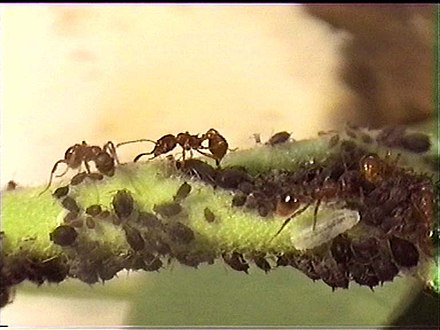Ants are one of the most successful insects on earth and belong to the order Hymenoptera and family Formicidae. Ant colonies are built on a complex social structure based on a clear hierarchy and division of labor. They are found in a wide variety of environments, almost all over the world, with the exception of Antarctica and the extremely cold Arctic regions.

Body size: Ants vary in body length from a few millimeters to several centimeters.
Structure: Their body is divided into three parts: head, thorax and abdomen. They have six legs, each leg is divided into multiple segments.
Head: The head is equipped with a pair of strong tentacles and large jaws for crushing food.
Communication: Ants communicate using chemicals called pheromones that can guide other ants to food sources or warn of danger.
Social structure: An ant colony usually has one or more queens, who are responsible for the reproduction of offspring. Worker ants share tasks such as nest construction, food search, and larvae care. There are also male ants, whose main function is to mate with the queen.
Nest: Ants build themselves rich and complex nest structures, and some can even regulate the temperature and humidity inside.
Food: Ants are omnivorous insects that eat both animals and plant matter. Some species feed on sweet dew aphids for the honeydew they secrete, while others act as predators or scavengers.
Migration: When the environment is no longer suitable for habitation or the nest colony becomes too crowded, ants will migrate and build new nests.
Reproduction: Most ant colonies will fly once or several times a year. After the new queen ants and male ants fly and mate, the queen who has taken off her wings will look for a suitable place to build a nest.
Decomposers: Ants play the role of decomposers in the ecosystem by consuming leaves, dead animals and other organic matter.
Seed dispersal: Certain ant species collect seeds and carry them back to their nests, where they sometimes germinate into new plants near their nests.
Soil Aeration: The act of building a nest aids in soil aeration and nutrient cycling.
Stress resistance: Ants can adapt to a variety of environments and can quickly respond to changes in the environment.
Invasive species: Some ants such as fire ants and yellow crazy ants are considered invasive species and these ants can cause serious damage to agriculture and ecosystems.
Control: Ants can become pests in agricultural and urban environments, so a variety of methods have been developed to control ant populations.
Research object: Social behavior and complex network construction make ants a valuable subject for scientific research.
Although ants are small, the complexity of their social organization has many similarities with human society. They provide a very rich model for research in biology, sociology and even robotics.
animal tags: Ant
We created this article in conjunction with AI technology, then made sure it was fact-checked and edited by a Animals Top editor.